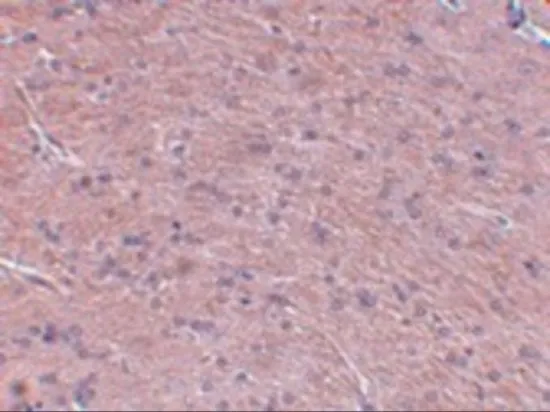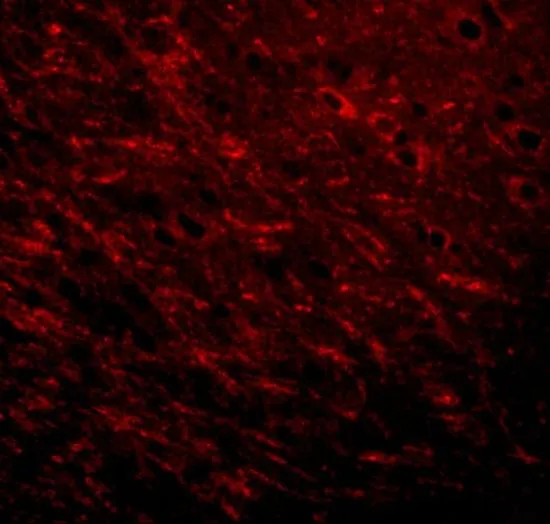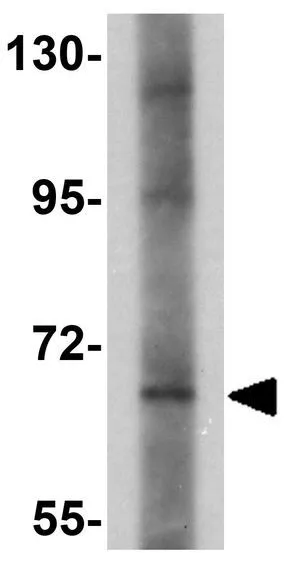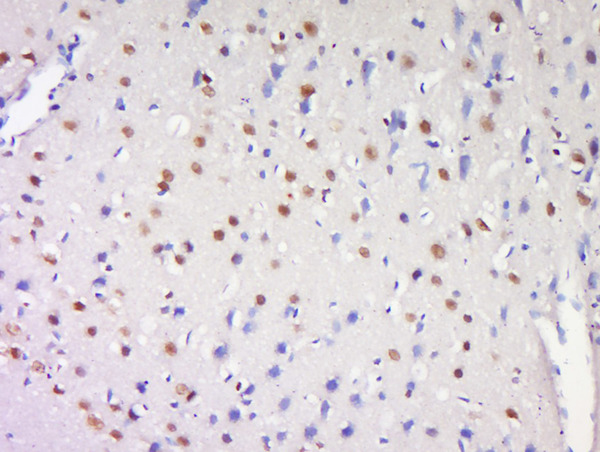
IHC-P analysis of rat brain tissue using GTX85249 Prosapip1 antibody. Working concentration : 2.5 microg/ml
Prosapip1 antibody
GTX85249
ApplicationsWestern Blot, ELISA, ImmunoHistoChemistry, ImmunoHistoChemistry Paraffin
Product group Antibodies
TargetLZTS3
Overview
- SupplierGeneTex
- Product NameProsapip1 antibody
- Delivery Days Customer9
- Application Supplier NoteWB: 1 microg/mL. IHC-P: 2.5 microg/mL. *Optimal dilutions/concentrations should be determined by the researcher.Not tested in other applications.
- ApplicationsWestern Blot, ELISA, ImmunoHistoChemistry, ImmunoHistoChemistry Paraffin
- CertificationResearch Use Only
- ClonalityPolyclonal
- Concentration1 mg/ml
- ConjugateUnconjugated
- Gene ID9762
- Target nameLZTS3
- Target descriptionleucine zipper tumor suppressor family member 3
- Target synonymsPROSAPIP1, leucine zipper putative tumor suppressor 3, ProSAP/Shank-interacting protein 1, leucine zipper, putative tumor suppressor family member 3, proline rich synapse associated protein interacting protein 1
- HostRabbit
- IsotypeIgG
- Protein IDO60299
- Protein NameLeucine zipper putative tumor suppressor 3
- Scientific DescriptionProsapip1 is a binding partner of the postsynaptic density (PSD) protein ProSAP2/Shank3, a major scaffolding protein in excitatory brain synapses. Prosapip1 is thought to bind ProSAP2/Shank3 through ProSAP2/Shank3s PDZ domain and link it in turn to the Spine-associated Rap-Gap (SPAR). Prosapip1 shares significant homology with another PSD protein, PSD-Zip70, with both coding for a Fez1 domain that can be found in a total of four related protein, forming a novel family of scaffolding molecules termed Fezzins. Recent studies show that Prosapip1 can be found in endocrine cells in which it is localized primarily in the hormone-storing compartment of these cells, suggesting that Prosapip1 may have other functions in non-neuronal cells.
- Storage Instruction-20°C or -80°C,2°C to 8°C
- UNSPSC12352203







